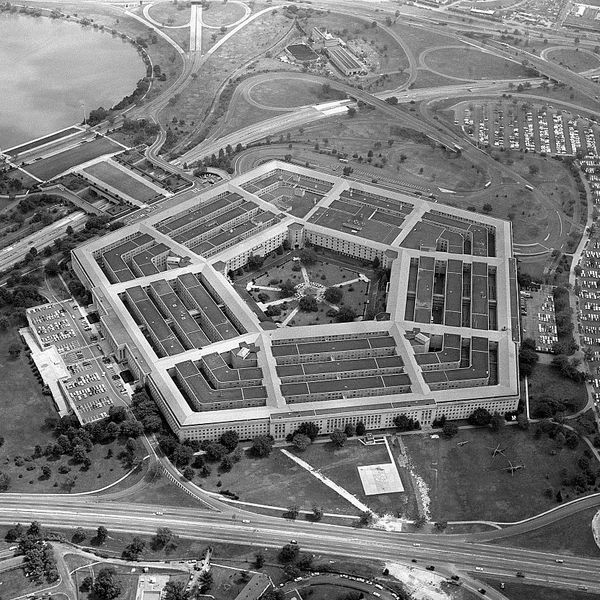Brett Davis is a Partner in New North Ventures — a Venture Capital firm focused on technological innovation. Davis retired as a Senior Executive in the Central Intelligence Agency and Special Operations Officer in the US Navy. His combined 34 years of government experience included leading complex operations and enterprise-wide programs across the Central Intelligence Agency, National Reconnaissance Office, US Military and other government agencies.
OPINION — We are living in an age of accelerating technological advancements, geopolitical challenges, and an increasingly vocal expectation from the American public for a more stable and secure future. This statement could have been a leading sentence in the news 50 years ago, or even 100 years ago – so what is different now? Urgency of action. The speed of change has dramatically increased and so must America’s ability to incorporate new capabilities into our national security infrastructure. The time has come for the Department of Defense to streamline the procurement process and work more directly with industry in a collaborative manner or risk being left behind in the new age of innovation.
With the ongoing global pandemic, we are directly witnessing America’s ability to innovate and incorporate new ideas at full throttle. Outdated approval processes have been overhauled and updated with appropriate risk-managed approaches. Yes, there’s been turmoil along the way, but in the aggregate, the pandemic has forced positive change which has been essential in the race toward therapeutics and vaccines. With a more inclusive attitude of engaging directly with bio-tech leaders in the healthcare field, Private Equity and Venture Capital firms, entrepreneurs, and scores of CEOs running companies big and small, government and business leaders are working together to solve a complex problem in a way not seen in a very long time.
Beyond the current crisis of the pandemic, we are facing strategic national security threats from China’s and Russia’s advances in hypersonic weapons and increasingly pervasive means of electronic surveillance augmented by artificial intelligence. We need DoD to accept a more risk averse mindset, or often called “smart-risk”, in testing and development to field actionable capabilities. Empowering Program Managers with greater responsibility, authority, and accountability is necessary to achieve our nation’s objectives in this new environment. Outdated approval processes designed to bootstrap mediocre functionaries are no longer good enough for the work ahead. We can, and must, do better.
Hypersonic weapons traveling at Mach 5, faster than 3,800 miles per hour, present challenges due to their speed, maneuverability and trajectories. Developing countermeasures – quickly – is critical for defense of the homeland. Fortunately, we have templates of dynamically successful programs from the past from which we can adapt for today’s environment. The DoD’s 1960s-era X-15 program, an experimental high-speed rocket-powered research plane built by North American Aviation, flew 199 flights, almost once every two weeks and when problems came up the team quickly figured out what went wrong and immediately commenced the next test. Also, to collect critical intelligence in the denied airspace of Russia, CIA partnered with the famed Skunk Works of Lockheed to design, test and fly the Mach 3+ high altitude surveillance A-12 Oxcart, the predecessor to the SR-71. In both instances, the government agencies worked closely with industry and cut through red tape and bureaucratic boundaries to accelerate the development of revolutionary systems. Failure during testing was expected, but it was balanced with the promise of accelerated learning, iterative testing, and operational delivery.
With the increasing features on our phones, in our car’s control systems, and in on-line advertising, there are increasing threats to our personal privacy and the security of our financial and medical records – to say nothing of the enemy’s ability to predict our military’s intentions on the battlefield. DoD needs to better partner with commercial companies and embrace their research, development and engineering advances. Incentivizing companies with competitive profit margins in defense manufacturing and assessing value to the nation’s security, which goes beyond a simple cost analysis, needs to be more holistically addressed. CIA’s In-Q-Tel is an excellent example of government working with industry, in a commercial model, complete with participation from bona fide Venture Capitalists, working collaboratively to solve some of the nation’s toughest problems. Here, acquisitions move at the ‘speed of relevance’ and solutions are iterated upon until a working product is created. Operational users are engaged upfront and vote on the prioritization of projects. It’s an exhilarating environment for engineers and commercial businesspeople to contribute to America’s security and make a difference.
The foundational shift in moving toward a more streamlined acquisition process requires senior leaders to place more trust in the Program Managers. With more trust, the Kafkaesque contract approval process can be dramatically reduced, innovative and novel solutions from a wider variety of companies can be reviewed and put into motion. Leaders have to be more tolerant of mistakes, which isn’t to be confused with being lax and dropping standards. Conversely, standards can be increased when the bureaucratic restraints are dropped, and innovative results are rewarded. It’s time to trust and empower DoD’s Program Managers, invite America’s most innovative minds into a partnership, improve the collaborative culture, and focus on mission outcomes. America’s security depends upon it.
Have thoughts to add on the government acquisition process keeping up with the speed of innovation? Drop us a note at Editor@thecipherbrief.com
Read more expert-driven national security insight, analysis and perspective in The Cipher Brief












